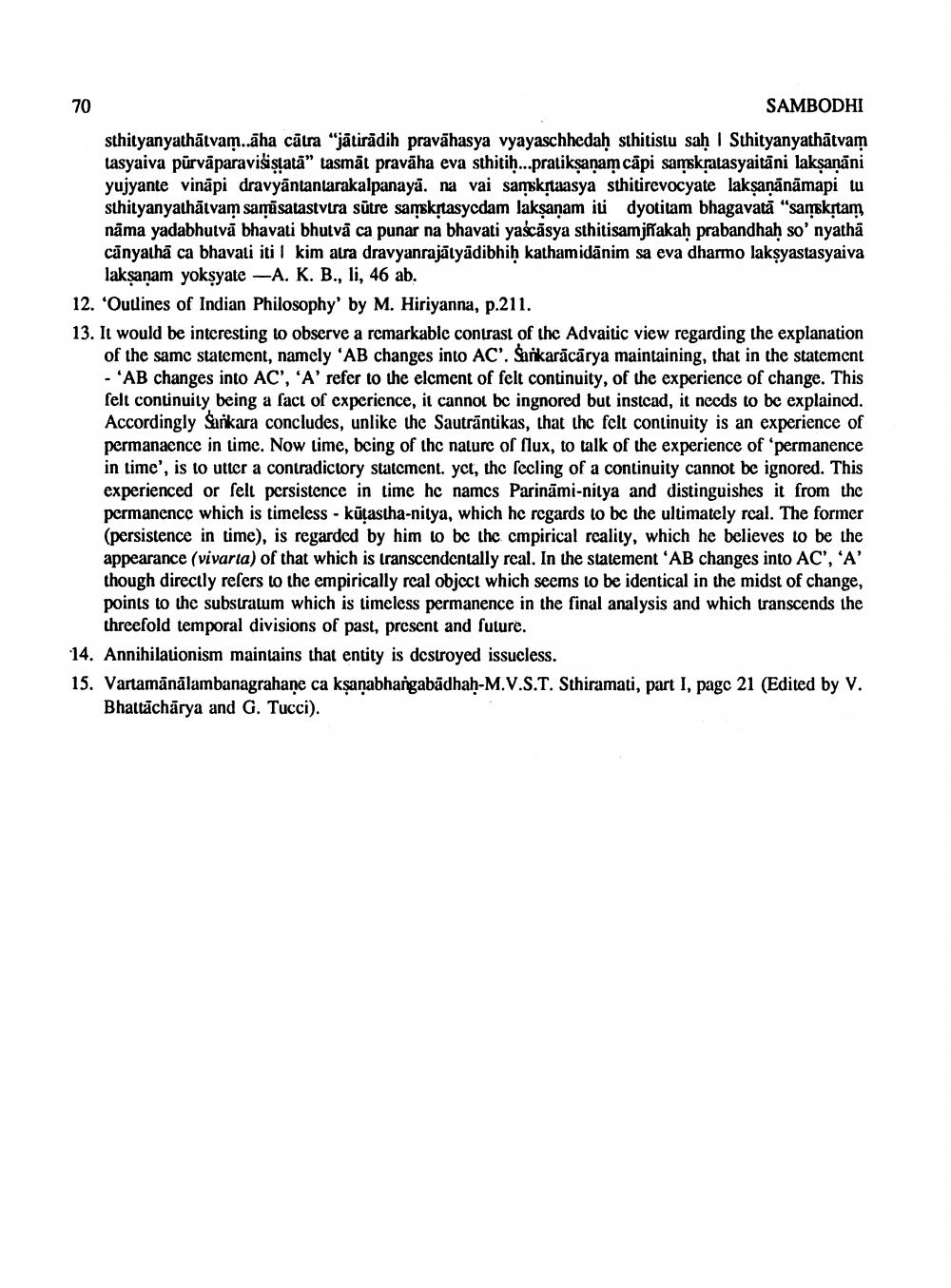________________
SAMBODHI sthityanyathātvam..äha cātra "jātiradih pravāhasya vyayaschhedah sthitistu sah | Sthityanyathātvam tasyaiva pūrvāparavisistatā” tasmāt pravāha eva sthitih...pratikșanamcāpi samskratasyaitāni laksanāni yujyante vināpi dravyāntantarakalpanaya. na vai samskrtaasya sthitirevocyate laksanānāmapi tu sthityanyathātvam saņāsatastvira sūtre samskıtasycdam laksanam iu dyotitam bhagavatā "samkrtam nāma yadabhutvā bhavati bhutvä сa punar na bhavati yascāsya sthitisamjisakah prabandhah so' nyatha canyathā ca bhavati iti 1 kim atra dravyanrajālyadibhiḥ kathamidānim sa eva dharmo laksyastasyaiva
lakṣanam yokşyate -A. K. B., li, 46 ab. 12. 'Outlines of Indian Philosophy' by M. Hiriyanna, p.211. 13. It would be interesting to observe a remarkable contrast of the Advaitic view regarding the explanation
of the same statement, namely 'AB changes into AC'. Sarkarācārya maintaining, that in the statement - 'AB changes into AC', 'A' refer to the element of felt continuity, of the experience of change. This felt continuity being a fact of experience, it cannot bc ingnored but instcad, it necds to be explained. Accordingly Sankara concludes, unlike the Sautrāntikas, that thc felt continuity is an experience of permanaence in time. Now time, bcing of the nature of flux, to talk of the experience of 'permanence in time', is to utter a contradictory statement. yct, the secling of a continuity cannot be ignored. This experienced or selt persistence in time he names Parināmi-nitya and distinguishes it from the permanence which is timeless - kūtastha-nitya, which he regards to be the ultimately rcal. The former (persistence in time), is regarded by him to be the cmpirical reality, which he believes to be the appearance (vivarta) of that which is transcendentally real. In the statement AB changes into AC', 'A' though directly refers to the empirically rcal object which seems to be identical in the midst of change, points to the substratum which is timeless permanence in the final analysis and which transcends the
threefold temporal divisions of past, present and future. 14. Annihilationism maintains that entity is destroyed issucless. 15. Vartamānālambanagrahane ca kşanabhangabādhah-M.V.S.T. Sthiramati, part I, pagc 21 (Edited by V.
Bhattāchārya and G. Tucci).




